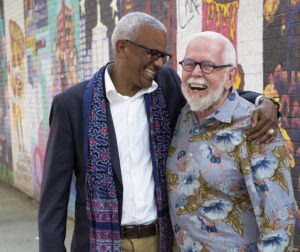Leaders of Tomorrow: Jane Rohde
Jane Rohde was drawn into senior care design by observing a gap between the way residents and staff in long-term living facilities work and live in the spaces that were created for them. “There was a difference between what people were building and what the needs of the residents and staff are,” Rohde recalls of her early days in the field, “and there were no processes that assisted users in sharing their care models or residents’ needs with the designers and developers.”
Rohde has been focused on the senior living and senior healthcare niche for more than 20 years. She began her venture into eldercare design after graduating from architecture school at Virginia Polytechnic Institute and State University and completing a thesis that examined the Fuggerei community for the elderly in Augsburg, Germany.
After serving as vice president of design for Erickson Retirement Communities, Rohde set off on her own, launching JSR Associates in Ellicott City, Maryland, which develops architecture and care models, and designs and manages senior living developments.
Rohde founded JSR on the principles of evidence-based research, sustainable design and resident-centered architectural programming—novel ideas at the time—with the intention of closing the gaps between designers and developers and residents and staff. She uses research methods such as focus groups and post-occupancy reviews to continually improve future development. She has made it her mission to advance senior living outside JSR, based on the research her firm conducted. She and her team developed an educational DVD for other developers and has presented her findings on senior living, aging in place and healthcare at high-profile national and international forums including the Healthcare Design Conference, the Environments for Aging Conference, NEOCON, LeadingAge and the ASHE/PDC Conference.
Rohde sits on the Research Advisory Council and the Environmental Standards Council (both are part of The Center for Health Design,). She also serves on the board of the American Academy of Healthcare Interior Designers and is part of the Health Guidelines Revision Committee (HGRC) for the Guidelines for Design and Construction of Health Care Facilities.
As primary author of the Senior Living Sustainability Guide, Rohde advanced the idea of the four dimensions in senior living design: the resident, the organization, the operation and the physical setting. She says that when a project fails to live up to expectations, it is almost always because of inadequate information in the planning stages. “The key is finding the right questions to ask upfront, but then also overlaying that functional discussion and existing plans and concepts with the most recent trends in senior living, culture, care models, reimbursements and the needs of the current residents, as well as the needs of the next generation of residents.”
On Rohde’s plate now is a project located in Hangzhou, China, China Senior Care. She serves as its director of operations and internal processes. When completed, the facility will be the first new nursing home to follow a resident-centered model of care, and, says Rohde, will hopefully serve as a model and set the standard of care for future skilled nursing facilities in that country.
Looking toward the future here on U.S. soil, Rohde says she is excited about “the opportunity to see the adoption of some of the new models that work really well but that have long gone unrecognized by reimbursement agencies.” She adds, “People are really looking at the system differently…. I think the result will be improved outcomes and quality of life at the same or at less cost than we have now.”
She is also happy that her passions are shared by more and more individuals in her field. “It seems like I’ve been talking about resident-centered care and evidence-based design forever, but it’s still relatively new,” she notes, adding that the industry has become “more savvy…the opportunities in residents wanting more, and the engagement of the elders and meeting what they want is what is most exciting, as is removing barriers to resident-centered design.”
Finally, she adds, “This is a great time. I feel like some of the models we’ve been talking about for last ten years have finally come to fruition. In the next ten years, I hope to start to whittle down issues in lower- and middle-income seniors, and looking at how to scale models to fit lower incomes.
Gina LaVecchia Ragone is a freelance writer based in Cleveland, Ohio.
Related Articles
Topics: Articles , Design











